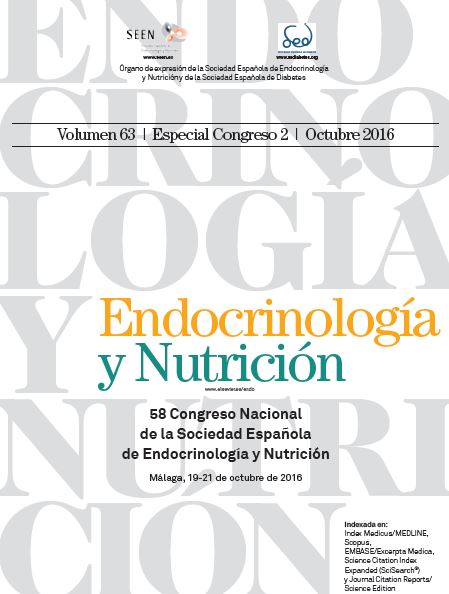284 - PRIMARY HYPERPARATHYROIDISM AFTER THYROID SURGERY FOR SIMPLE NODULAR GOITER
Servico de Endocrinologia. Hospital Santa Maria. Lisboa. Portugal.
Introduction: Primary hypoparathyroidism is a well known early complication of thyroid surgery now occurring in less than 1% of the patients. We now describe primary hyperparathyroidism as a late complication of thyroid surgery.
Case report: MMCLR is a female patient aged 65. She presented goiter since age 11 years, with a family history of goiter. At age 25 left thyroidectomy was performed and at age 45 total thyroidectomy was completed. Since then she was prescribed levothyroxine 125 μg daily. There is no record of urolythiasis or of bone disease. Now referred to the endocrine outpatient department, analytical evaluation revealed normal thyroid function – under treatment - with negative thyroid antibodies, but primary hyperparathyroidism – calcium 14.0 mg/dL, phosphate 2.4 mg/dL, ionized calcium 1.73 mmol/L, serum parathormone 792 ng/dL (RV 15-70 pg/mL) with osteopenia of the femoral neck. Ultrasonography revealed an enlarged superior left parathyroid, with increased late uptake in the sestamibi scan. Surgery removed a superior left parathyroid gland hyperplasic and adenomatous. Definitive primary hypoparathyroidism followed.
Discussion: Because of what apparently was simple nodular goiter this patient was submitted to two thyroid surgeries. When later she presented with evidence for primary hyperparathyroidism a single enlarged parathyroid gland was found and surgical removal of that gland resulted in definitive hypoparathyroidism. The most logical explanation is that previous thyroid surgeries had resulted in the removal of the other parathyroid glands leading to compensatory hyperplasia of the only one remaining gland that later progressed to autonomous adenoma.





